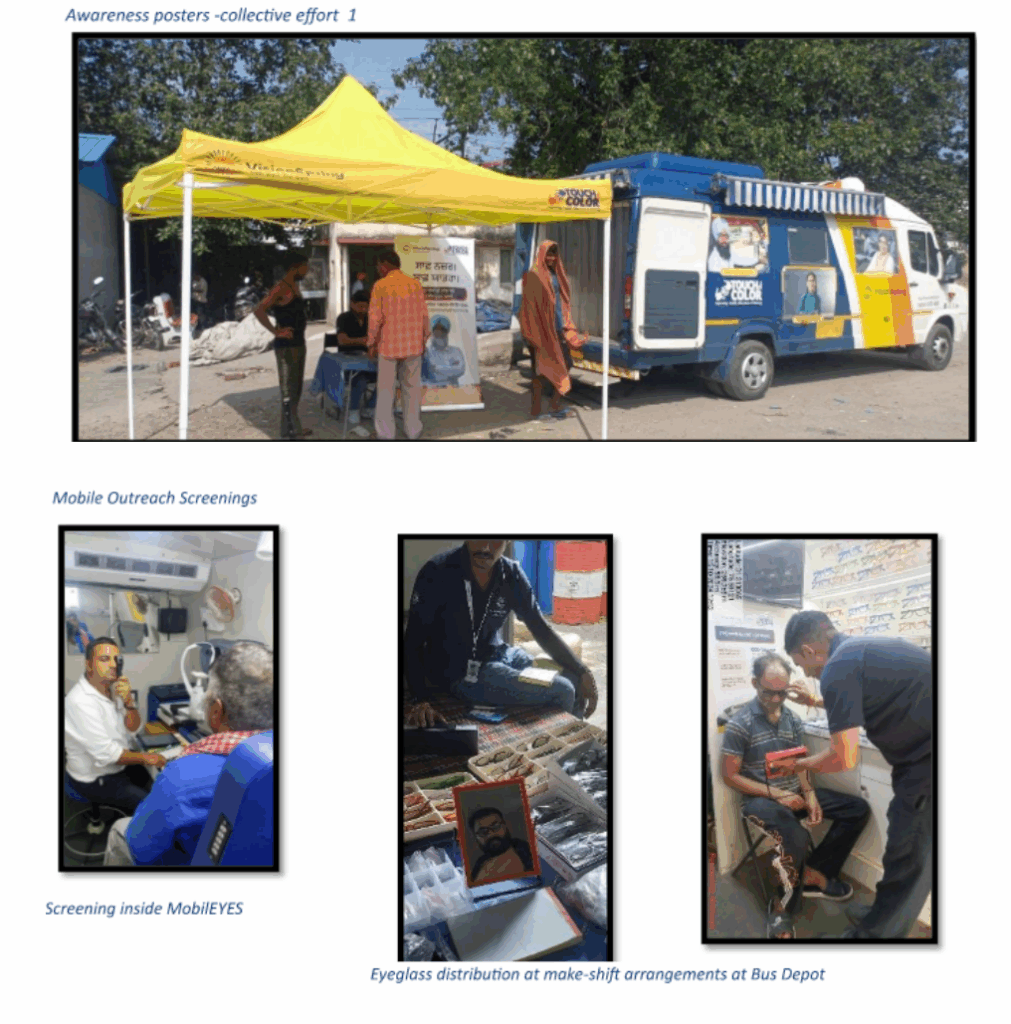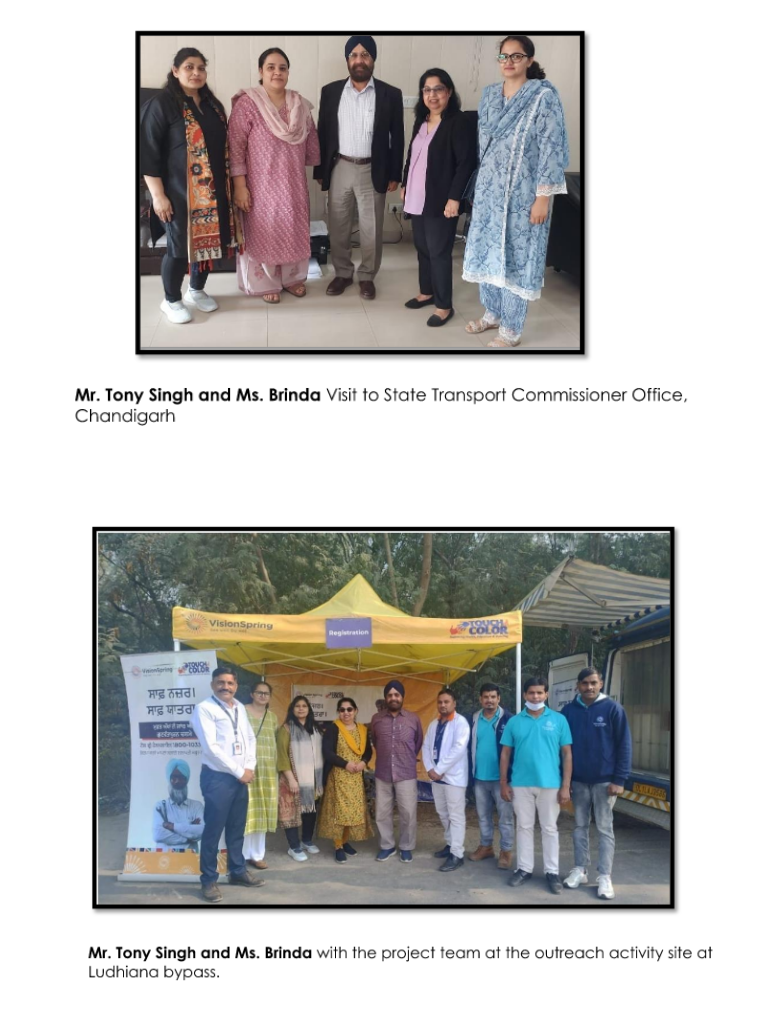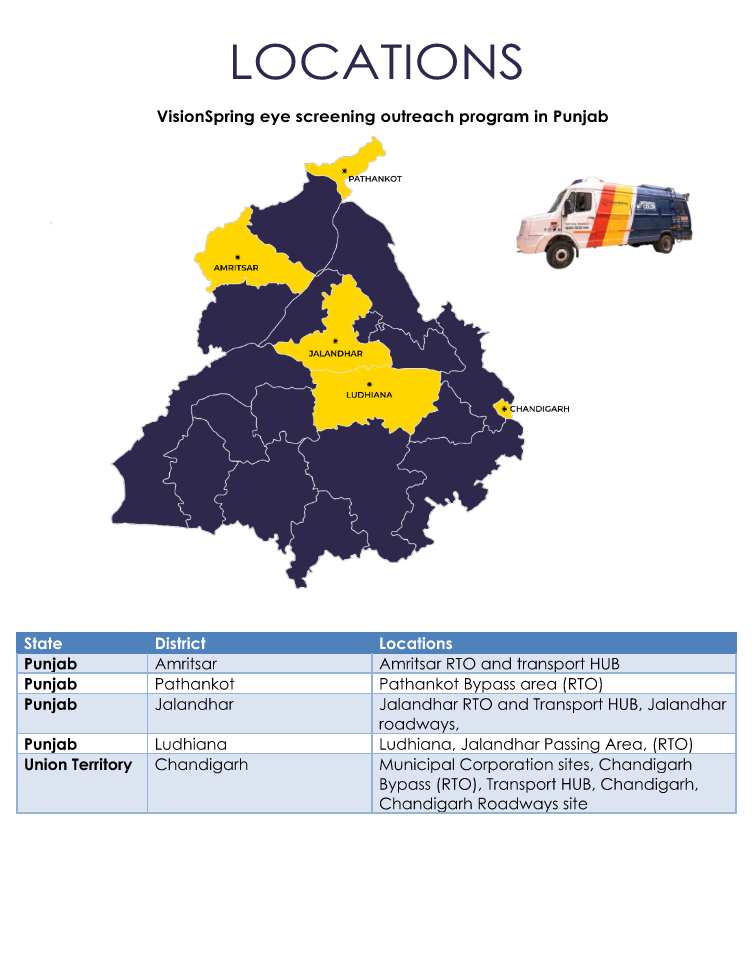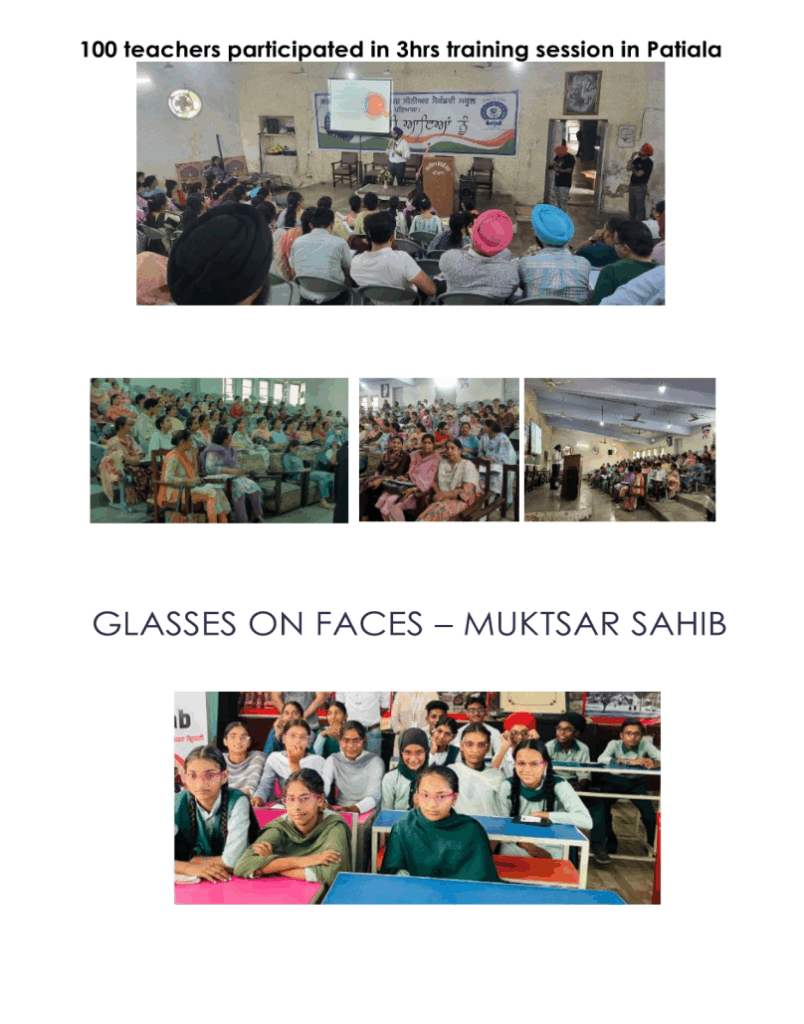SEE TO BE SAFE PROGRAM
For the year 2024, Touch of Color, in partnership with Vision Spring, launched the See To Be Safe Program. The program aimed to create awareness among commercial drivers, allied transport workers and associated communities on the importance of vision screening and eyeglasses for drivers to ensure road safety.
The project is in alignment with The Clear Vision Punjab Program, which is a pioneering initiative aimed at eliminating refractive errors across Punjab by 2028 and developed in collaboration with Vision Spring and the Touch of Color Foundation. The program also strives to enhance vision health through comprehensive screenings, advocacy campaigns, and innovative outreach strategies through alliances with partner organizations.
Key Performance Indicators
- 11,765 Total People Screened;
- 9846 Number of Drivers Screened;
- 204 Number of Camps Conducted;
- 7401 Total People that Needed Glasses (Refractive Error);
- 4494 (61%) Total Glassed Provided (as a % of those Identified with Refractive Error);
- 408 Number of People Referred to Hospital for Ocular Conditions (Age Related Macular Degeneration); and
- 4008 (54%) First Time Wearers.



The project covered 4 districts of Punjab and Union Territory Chandigarh in a short span of project duration of about 9 months. The strength of the project was its flexibility and tenacity with available resources and situation. The project sailed firmly facing turbulence like heat waves, political restrictions, rejections from approving authorities etc. The project was backed by three teams of technical experts and management core members to maintain program quality and momentum till the finish line.
School Screenings 2024
SEE TO LEARN PROGRAM
In this program the teachers in the school were trained to do the initial screenings of the children. Vision walls were installed in 5 schools in Muktsar Sahib and 3 in Patiala.
A total of 40,000 school children from Government Schools of Patiala and Muktsar Sahib
were screened. 10% of children were prescribed eyeglasses. All children were informed
that they will get eyeglasses within 4-5 weeks of the eye screening outreach program.
100 children were referred to nearby Govt hospitals. Parents of these children, through
their teachers, were asked to visit hospital to get their eyes tested from a specialist.
In general, for both Patiala and Muktsar Sahib, the number of female children prescribed glasses is higher than male children. Patiala, out of 13,457 children screened, 1,802 needed eyeglasses, which is approx.13% (compared to 8.7% for male children). Muktsar Sahib, out of 7,049 children screened, 846 needed eyeglasses, which is approx. 12% (compared to 6% for male children).


